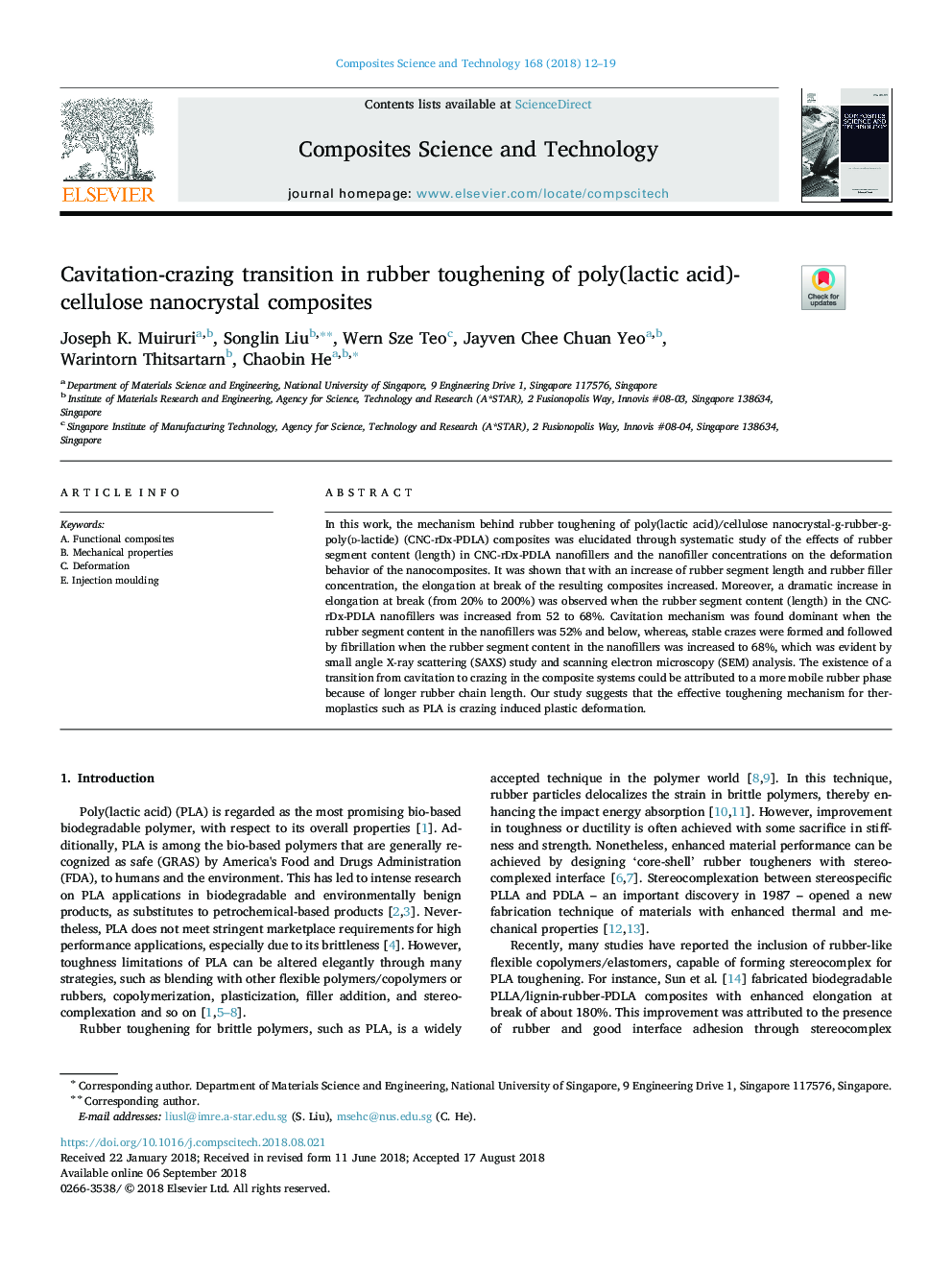| کد مقاله | کد نشریه | سال انتشار | مقاله انگلیسی | نسخه تمام متن |
|---|---|---|---|---|
| 10152759 | 1666164 | 2018 | 8 صفحه PDF | دانلود رایگان |
عنوان انگلیسی مقاله ISI
Cavitation-crazing transition in rubber toughening of poly(lactic acid)-cellulose nanocrystal composites
ترجمه فارسی عنوان
انتقال حفره و حفره در چسبندگی لاستیک کامپوزیت های نانوبلور پلی اتیلن (اسید لاکتیک)
دانلود مقاله + سفارش ترجمه
دانلود مقاله ISI انگلیسی
رایگان برای ایرانیان
کلمات کلیدی
موضوعات مرتبط
مهندسی و علوم پایه
سایر رشته های مهندسی
مهندسی (عمومی)
چکیده انگلیسی
In this work, the mechanism behind rubber toughening of poly(lactic acid)/cellulose nanocrystal-g-rubber-g-poly(d-lactide) (CNC-rDx-PDLA) composites was elucidated through systematic study of the effects of rubber segment content (length) in CNC-rDx-PDLA nanofillers and the nanofiller concentrations on the deformation behavior of the nanocomposites. It was shown that with an increase of rubber segment length and rubber filler concentration, the elongation at break of the resulting composites increased. Moreover, a dramatic increase in elongation at break (from 20% to 200%) was observed when the rubber segment content (length) in the CNC-rDx-PDLA nanofillers was increased from 52 to 68%. Cavitation mechanism was found dominant when the rubber segment content in the nanofillers was 52% and below, whereas, stable crazes were formed and followed by fibrillation when the rubber segment content in the nanofillers was increased to 68%, which was evident by small angle X-ray scattering (SAXS) study and scanning electron microscopy (SEM) analysis. The existence of a transition from cavitation to crazing in the composite systems could be attributed to a more mobile rubber phase because of longer rubber chain length. Our study suggests that the effective toughening mechanism for thermoplastics such as PLA is crazing induced plastic deformation.
ناشر
Database: Elsevier - ScienceDirect (ساینس دایرکت)
Journal: Composites Science and Technology - Volume 168, 10 November 2018, Pages 12-19
Journal: Composites Science and Technology - Volume 168, 10 November 2018, Pages 12-19
نویسندگان
Joseph K. Muiruri, Songlin Liu, Wern Sze Teo, Jayven Chee Chuan Yeo, Warintorn Thitsartarn, Chaobin He,
